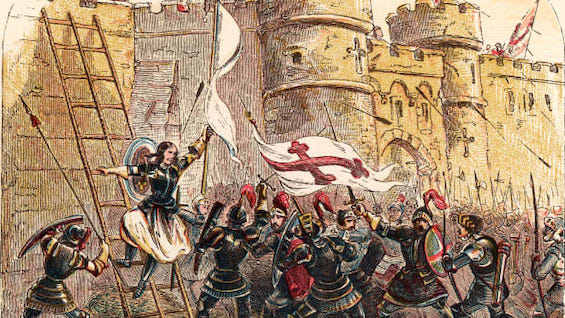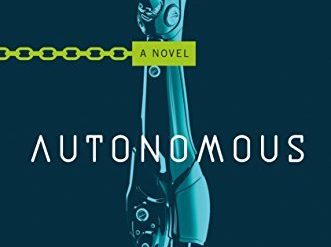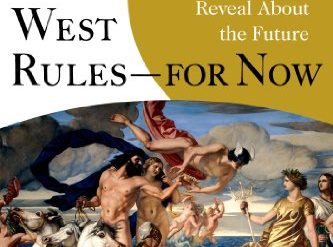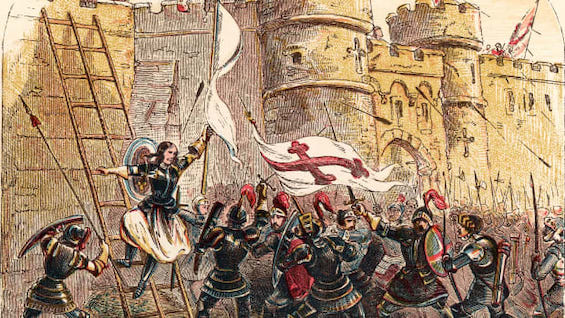
Few of us in the 21st century think much about the medieval era. Nor are we likely to believe that life in that time bears any meaningful relationship to the world around us today. Yet that would be a mistake. Much of what we take for granted traces its origins to the Middle Ages. The banking system. Cities. Universities. The emergence of Europe as a power in the world. Far from the “Dark Ages,” as so many believed in centuries past, the Middle Ages was a tumultuous stretch of a thousand years during which the reality we know today in the West grew out of the rubble of the Roman Empire. Listed here are the best books I’ve read and reviewed about the Middle Ages, including both fiction and nonfiction.
This post was updated on April 10, 2024.
The best books I’ve read about the Middle Ages
Below, you’ll see capsule notes on all the books I’ve read and reviewed about the Middle Ages. Each includes a link to the full review I’ve written. They encompass a wide variety of approaches, from history and historical fiction to science fiction. What they have in common is that all were deeply researched by the authors and cast light on that distant era in ways that are both informative and entertaining.
If you’re familiar with some of these books, it’s most likely to be Ken Follett’s Kingsbridge Trilogy. So, you’ll note that I’ve reviewed only the prequel and the fourth volume. That’s because I read, and hugely enjoyed, the original first two novels in the trilogy itself before I began posting reviews in 2010. I recommend them all. They’re both enlightening and entertaining.
This list is only a start. I expect to add more in time to come. Stay tuned.
Readable histories by historians

Life in Medieval Europe: Fact and Fiction by Danièle Cybulskie (2019) 144 pages ★★★★☆—How people really lived in Medieval Europe
What comes first to mind when you think of Europe in the Middle Ages? Unending violence and unspeakable tortures? Babies and young children dying so often that parents would never dare to love them? Medical and surgical procedures so barbaric that ill or wounded people would have been better off without any treatment at all? If this is your conception of life in Europe then, you might devote two or three hours to reading medievalist Danièle Cybulskie’s breezy little medieval social history, Life in Medieval Europe: Fact and Fiction. In just 144 pages, she’ll disabuse you of these and many other modern misconceptions about the period.
In Life in Medieval Europe, Cybulskie dwells largely on the High Middle Ages (1000 to 1300 CE) and the Late Middle Ages (1300 to 1500 CE). The distinction is significant because, modern stereotypes of stagnation notwithstanding, change was unrelenting throughout those thousand years. And the change accelerated beginning roughly around the year 1000 in all aspects of medieval life. Cybulskie’s one glaring fault is that she fails to acknowledge her emphasis on the later years of the period.
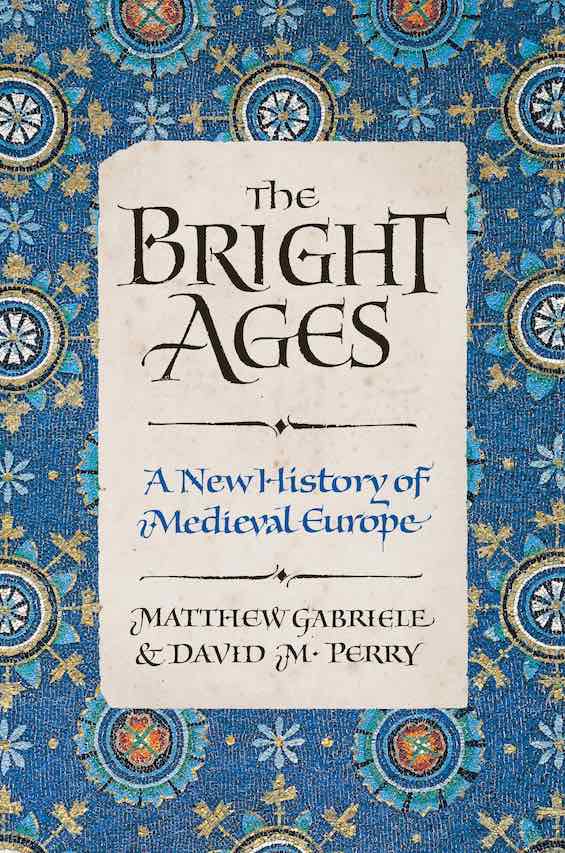
The Bright Ages: A New History of Medieval Europe by Matthew Gabriele and David M. Perry (2021) 336 pages ★★★★☆—A fresh look at the history of the Middle Ages
Scholars of medieval history seem to be unanimous in their conclusion that the Middle Ages were, in no way, the “Dark Ages.” Most of the stereotypes that abound in popular views of the era are poorly grounded in reality, if at all. But leave it to two young medieval historians to write a book that turns the label on its head and celebrates the accomplishments of the period. It’s even called The Bright Ages, to drive the point home. But in the process, they overplay their hand. Their effort to relate a history of the Middle Ages comes up short as a result.
The gist of the authors’ argument is that things were never as simple as most historical accounts of the period suggest. For example, histories of the period invariably describe society as hierarchical, with power emanating from the top. However, they write, “Many rulers of medieval Europe called themselves king, but the title alone didn’t come with any power. The question was to what extent they could marshal soldiers, acquire stable revenue streams, or exert judicial authority beyond their own court. So, kings traveled in order to hear petitions and make their presence visible, thus asserting that they had the authority.”
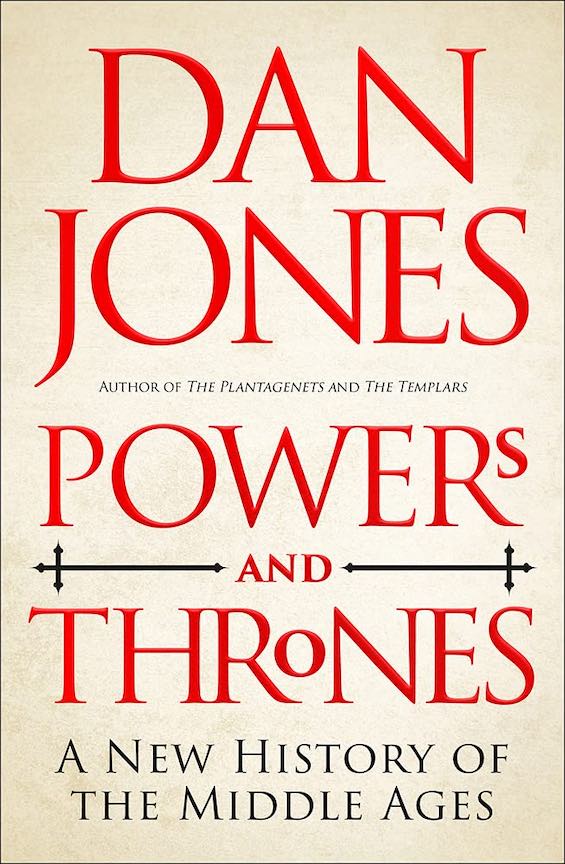
Powers and Thrones: A New History of the Middle Ages by Dan Jones (2021) 802 pages ★★★★☆—Change in the Middle Ages came thick and fast
Today the term “medieval” implies ignorance, backwardness, and barbarism. It’s the fruit of the long-held belief that the millennium between the implosion of Rome and the fall of Constantinople in 1453 were the “Dark Ages.” Then, in the prevailing view, monks were hunched over manuscripts in candlelight and little of consequence happened. Historian and journalist Dan Jones puts this shibboleth to rest in his insightful new popular history of the Middle Ages, Powers and Thrones. Dipping into the latest research in archaeology, climate science, and the history of technology as well as new historical research, he examines with a fine eye the evidence of change in the Middle Ages, sussing out the events that suggest parallels with our own time.

The Plantagenets: The Warrior Kings and Queens Who Made England by Dan Jones (2012) 561 pages ★★★★☆—The many great stories of Britain’s bloodiest dynasty
They ruled England (and Wales, Scotland, and Ireland from time to time) for more than three centuries. By my count, there were sixteen of them in all. They held sway, sometimes shakily, from 1154 to 1485. French in origin—their family’s roots lay in the County of Anjou—the Plantagenet kings reigned during the High and Late Middle Ages, when the English language evolved into Britain’s dominant tongue and the British parliamentary system began to take shape. But even the greatest of them—arguably, Henry II (1154-89), Edward III (1327-77), and Henry V (1413-22)—more closely resembled gangsters than today’s docile monarchs. And their dramatic stories come into high relief in The Plantagenets: The Warrior Kings and Queens Who Made England, British popular historian Dan Jones’ brilliant account of England’s longest-ruling dynasty.
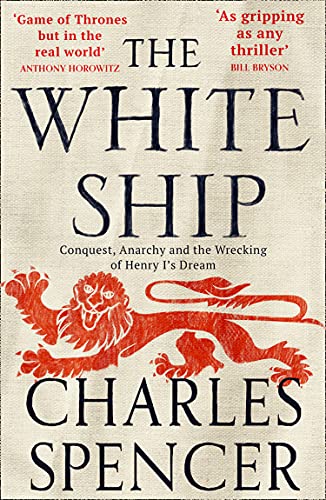
The White Ship: Conquest, Anarchy, and the Wrecking of Henry I’s Dream by Charles Spencer (2020) 352 pages ★★★★☆—When anarchy reigned in England
The White Ship is, effectively, a biography of William the Conqueror‘s youngest son, King Henry I of England and Duke of Normandy. Henry reigned from the year 1100 until his death from overeating toxic lampreys in 1135. But the book is more than that. After a cursory review of Norman history from 799, when Norsemen first invaded the coast of northern France, Spencer then delves deeply into Henry’s long struggle to defeat his two incompetent older brothers and seize the crown of England. During the following twenty years, Spencer shows, Henry gradually brought the turbulent country under his firm control. England lived in peace and what passed for prosperity early in the 12th century. Then catastrophe struck. The White Ship crashed on the rocks off the coast of Normandy, taking with it Henry’s—and England’s—hopes of dynastic succession and stability.
Deeply researched historical fiction
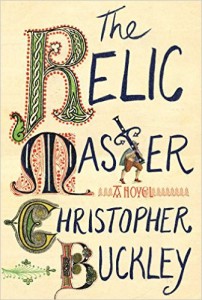
The Relic Master by Christopher Buckley (2015) 401 pages ★★★★★—An irreligious take on Catholic history
This diabolical tale is a send-up of the Catholic Church at what was probably the most unattractive period in its history. The dissolute scion of a notorious family, Lorenzo de’ Medici held forth in the Holy See as Pope Leo X, pursuing carnal pleasures and bankrupting the Vatican as a patron of the arts. He was perhaps the most corrupt and immoral in a long line of unspeakably awful Popes. In Wittenberg, in reaction to the excesses of Leo’s Church, the Augustinian monk Martin Luther began his campaign for reform. So went Catholic history.
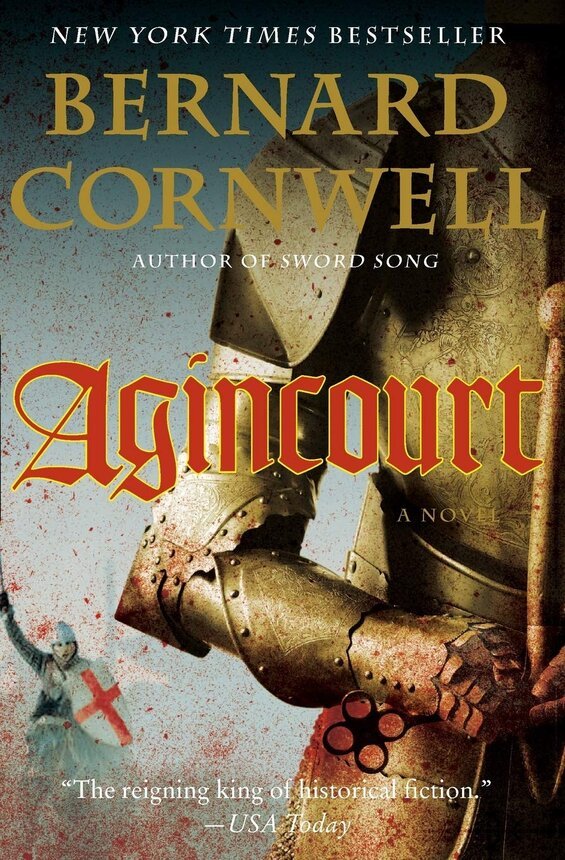
Agincourt by Bernard Cornwell (2008) 467 pages ★★★★★—When war was personal and face-to-face
When military historians tick off the greatest battles in world history, the clash between the English and the French at Agincourt in 1415 is invariably on the list. Unlike some other battles, such as Stalingrad and Midway of recent memory, the victory at Agincourt didn’t represent a historic turning-point. Although the English under Henry V gained temporary advantage, the event brought no longer-term gains. It was one of many bloody battles in the Hundred Years’ War (1337–1453). Instead, Agincourt is remembered more for the lopsided victory it brought to England. Henry’s 6,000 exhausted and half-starved fighters, many of them violently ill with dysentery, challenged—and decisively defeated—a fresh French army of 30,000. And in his eponymous novel of the battle, popular historical novelist Bernard Cornwell conjures up all the blood, guts, and glory of the day.

The Long Ships by Frans B. Bengtsson (1941) 530 pages ★★★★★— A Viking saga reminiscent of myth and legend
For nearly three centuries (793–1066 CE) during the Middle Ages, Norsemen from Denmark, Sweden, and Norway ran rampant through Europe from present-day Russia to Spain, England, France, Italy, and Ireland. Known to us today as Vikings, they raided coastal communities all around the European continent, plundering and pillaging as they went. They colonized Normandy, England, Iceland, and Greenland. For a time, they also settled in what is today Newfoundland nearly 500 years before Columbus landed in the Caribbean. For an understanding of Viking culture, there is no better guide than Frans G. Bengtsson’s epic novel, The Long Ships.
Bengtsson’s hero is a Norseman named “Red Orm” Tosteson. In his introduction to the New York Review Books Classics Edition, Michael Chabon describes him as “crafty, resourceful, unsentimental, and mildly hypochondriac,” and he is surely all that and more. But above all, Orm is a powerful warrior and a forceful leader. We follow him from his childhood as the descendant of a long line of celebrated warriors into his adulthood and old age as a wealthy and renowned chieftain.
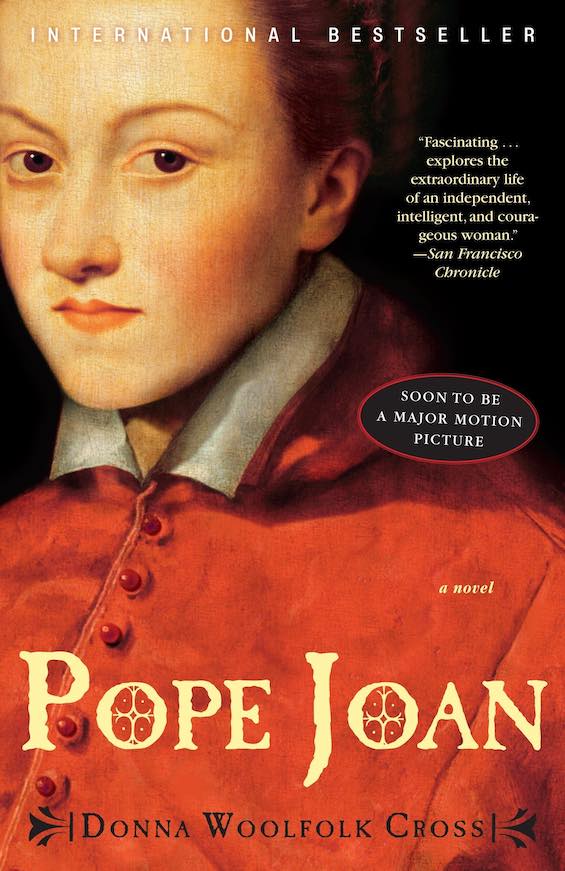
Pope Joan by Donna Woolfolk Cross—When a woman sat on the Papal throne
One of the greatest controversies in the history of the Catholic Church surrounds the papacy of a ninth-century woman known to us as Pope Joan (Ioannes Anglicus). According to innumerable sources in Church records for centuries after her death in 855, her short reign (853-55) was an historical fact. In later times, however, the Church systematically suppressed any references to her. Official Vatican records now show the two years of her reign divided between the popes who immediately preceded and followed her. A female Pope simply doesn’t fit in a religion where men reign supreme.
But those early records remain, and together with later discoveries they constitute intriguing evidence that a woman did indeed rule the Church, even though most scholars today disagree. And in a captivating fictional account, the author Donna Woolfolk Cross leans heavily on the history of the period to paint a convincing picture of a brilliant woman who rose to the leadership of her Church despite the innumerable roadblocks laid in her way.

Cathedral by Ben Hopkins (2021) 545 pages ★★★★★—This beautifully written novel illuminates life in medieval Europe
Over a period of two decades (1989-2020), bestselling novelist Ken Follett published the four books of the Kingsbridge saga. In a staggering total of nearly 4,000 pages, the four novels follow the construction of a fictional cathedral in England from the tenth to the sixteenth centuries. Tens of millions of copies of the books have been sold. So, a comparison to Follett’s work seems natural for Cathedral, the later work of British screenwriter Ben Hopkins. But other than a central focus on the building of a Gothic cathedral, the similarities are limited. Above all, Cathedral dramatizes life in medieval Europe.
Follett brought to bear the sensibilities and instincts of a bestselling popular novelist on his series. Each of the four books is, at heart, a love story. The focus lies on a handful of characters whose interactions provide the drama. By contrast, Hopkins brings a screenwriter’s panoramic view to his work in Cathedral. His story follows the lives of the nobles, the churchmen, the merchants, the Jews, and the laborers of the town of Hagenburg in Alsace. Set during the tumultuous 13th and 14th centuries, the tale spans the years 1229 to 1352. The construction of the cathedral is central, but Hopkins’ subject is more truly the conflict between Church and town and the rise of a wealthy and ambitious middle class of merchants. The novel opens our eyes to the realities of life in medieval Europe.
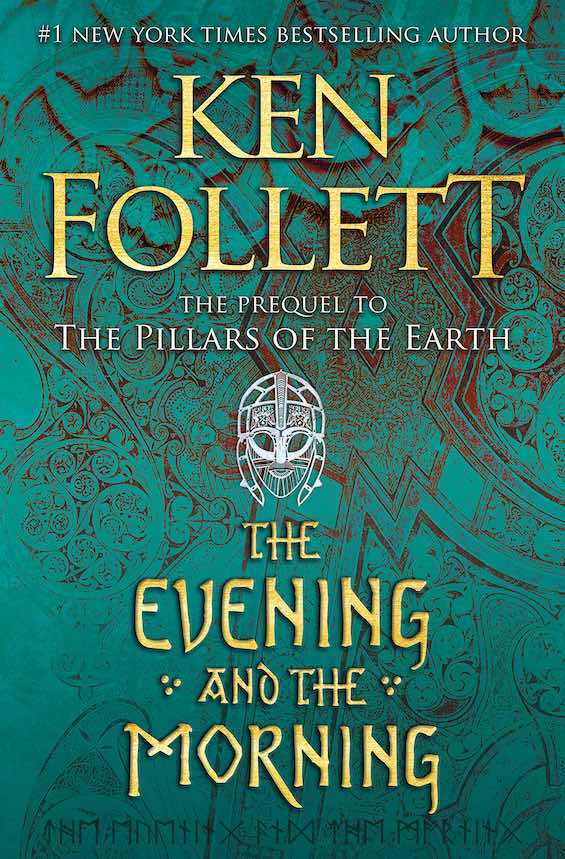
The Evening and the Morning (Kingsbridge #1) by Ken Follett (2020) 926 pages ★★★★☆—Ken Follett sets up the Kingsbridge Trilogy in a prequel
For decades Welsh novelist Ken Follett was best known for his bestselling thrillers, beginning with Eye of the Needle (1978), which established his reputation as a master of the craft. A decade later he indulged his longstanding passion for the architecture of classic European cathedrals when he published Pillars of the Earth (1989), the inaugural volume in the Kingsbridge Trilogy. And now, just three years after the publication of A Column of Fire completed the trilogy, he has produced a prequel, which deftly sets the scene for the three volumes that follow it chronologically.
Follett set the now-four books in the Kingsbridge series in England at intervals of about two centuries. The Evening and the Morning takes place during the years 997 to 1007 CE. The stories in the original trilogy unfold in the twelfth, fourteenth, and sixteenth centuries, respectively. Taken as a whole, they provide a vivid picture of England’s awakening from the Dark Ages to its ascension as a world power under Elizabeth I. Follett is a dogged researcher as well as an able storyteller. Despite the staggering length of the series—a total of nearly four thousand pages!—these tales skip and hum along. They prove an easy read, and no wonder. More than forty million copies of the first three books have already been sold.
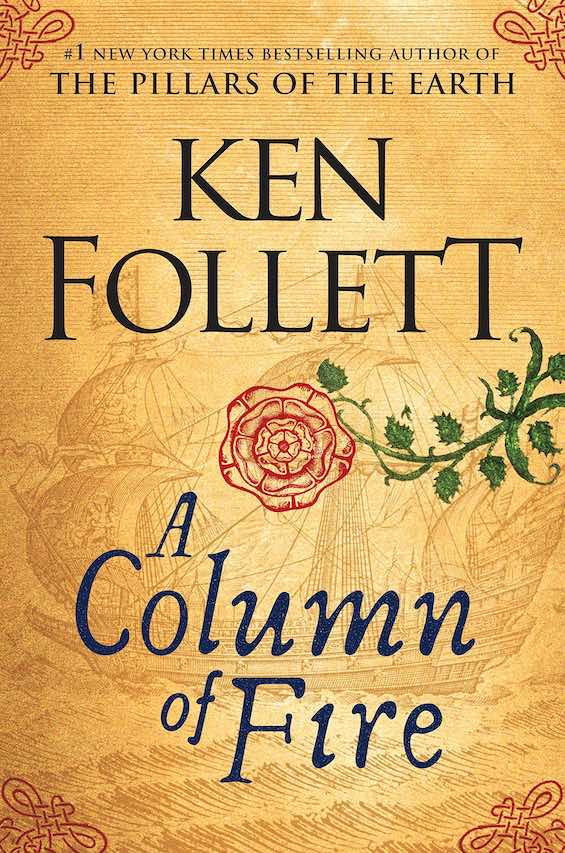
A Column of Fire (Kingsbridge #4) by Ken Follett (2017) 923 pages ★★★★☆—Ken Follett’s 16th-century Kingsbridge saga: Christians killing Christians
A Column of Fire is the fourth volume in Ken Follett‘s sprawling series of historical novels illuminating the history of England. The Pillars of the Earth, published in 1989, relates the story of the Kingsbridge Cathedral and the talented men who began its construction in the twelfth century. This first novel was followed in 2007 by World Without End,which picks up the Kingsbridge saga two centuries later, in the years just before, during, and after the Black Death. A Column of Fire continues the story through the sixteenth century, spanning the years 1558 to 1606, when Queen Elizabeth I ruled England.
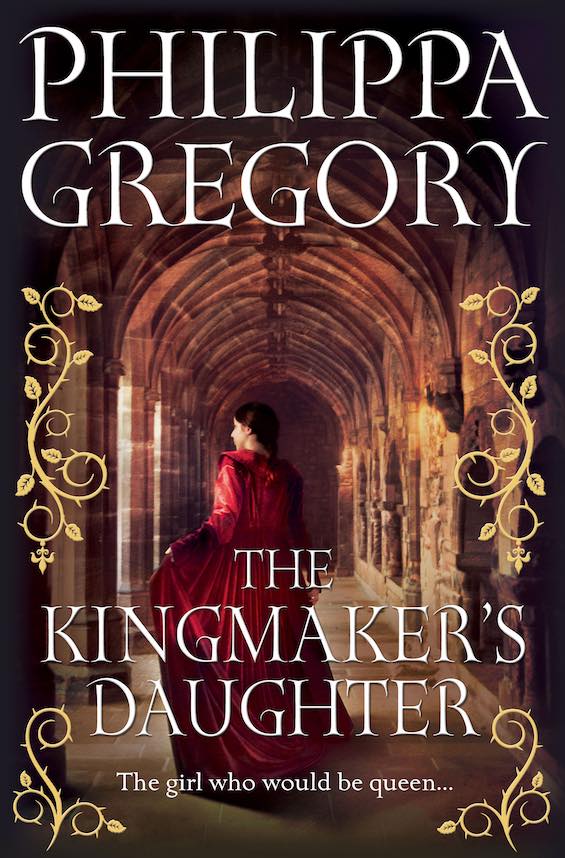
The Kingmaker’s Daughter (Plantagenet & Tudor Novels #4) by Philippa Gregory (2012) 434 pages ★★★★☆—Nothing noble about the nobility in 15th century England
She was the second daughter of the richest and most powerful man in England, mightier than the king himself. He was Richard Neville, known throughout the land as my namesake, “Warwick the Kingmaker.” And during her childhood, he deposed one king and placed another on the throne. It was all part of his life-long obsession to secure the throne for Anne Neville or her older sister Isabel as Queen of England. Philippa Gregory’s engaging historical novel, The Kingmaker’s Daughter, tells Anne’s tale in her own words from her childhood to the pinnacle of glory when still a young woman less than twenty years later. It’s a story that starkly illustrates the reality that, in late medieval England, there was nothing noble about the nobility.
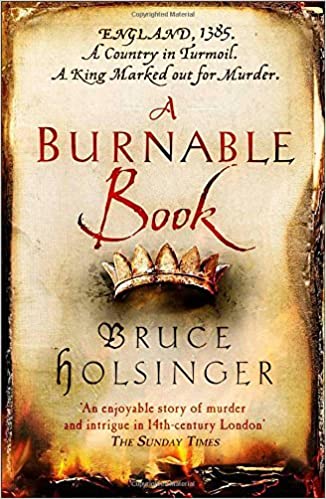
A Burnable Book (John Gower #1 of 2) by Bruce Holsinger (2014) 276 pages ★★★★☆—A plot to assassinate the king in medieval England
Late in the 14th century, England continued to suffer from the factionalism and political instability that had bedeviled the country for centuries. The Black Death was a century in the past, and the population had begun to grow again. The earliest glimmers of the Reformation were introducing dissension into religious affairs. And the social order that had dominated the country throughout the Middle Ages was well on its way out. No longer could everyone be neatly squeezed into one of the three orders (nobility, clergy, and peasants). Now merchants, some of them wealthier than their former lords, were beginning to play a leading role in society. In this unsteady environment, medievalist Bruch Holsinger sets his engrossing novel about a plot to assassinate the king, A Burnable Book.
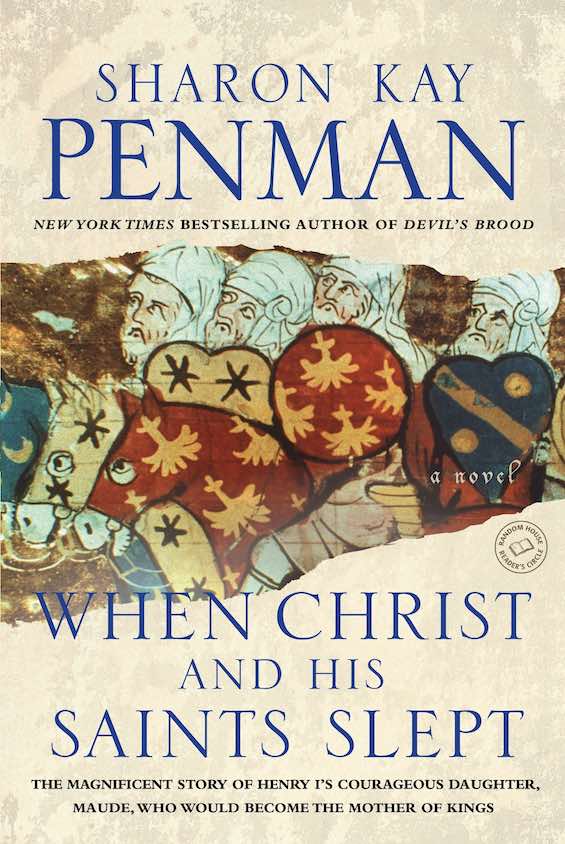
When Christ and His Saints Slept by Sharon Kay Penman (1994) 770 pages ★★★★☆—Cousin battles cousin in the first English civil war
One of the pivotal events in the evolution of Great Britain as we know it today occurred nearly 900 years ago during the era known as “The Anarchy.” From 1138 to 1153, what are today England and France experienced continuous turmoil, as two contenders battled for the throne in the first English civil war. (Historians point to the period from 1642 to 1651 as the English Civil War. However, it’s clear to me that in fact The Anarchy was more properly speaking the first English civil war.) The resulting conflict was devastating on both sides of the Channel. And its outcome set the course of Britain’s history for 300 years, inaugurating the reign of the Plantagenet Dynasty. English novelist Sharon Kay Penman illuminates this dark and consequential period in her sprawling historical epic, When Christ and His Saints Slept.
The Cadfael Chronicles
The twenty-one volumes of Ellis Peters’ series of amateur detective novels featuring Brother Cadfael provide an up-close view of life in England and Wales early in the 12th century. Peters, whose real name was Edith Pargeter, wrote scores of books in many genres but is best known today for the Cadfael Chronicles. The books were adapted to television in a series that ran from 1994 to 1998 on Britain’s ITV starring Derek Jacobi as Cadfael.
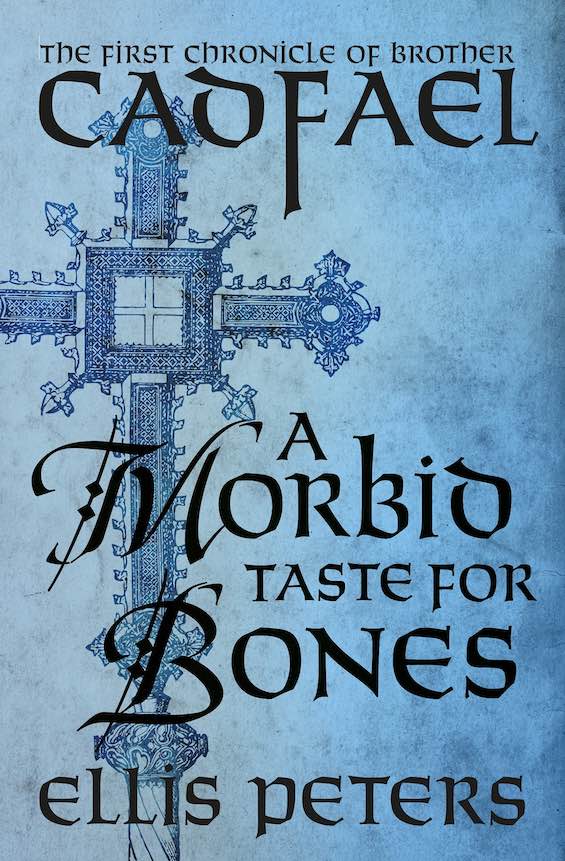
A Morbid Taste for Bones – Brother Cadfael #1 (1977) 213 pages ★★★★★—Reviewing the first book in the delightful Brother Cadfael series
In the first of the 20 mystery novels in the Brother Cadfael series, Peters introduces the brilliant Benedictine monk and his brothers. They live in the monastery of Saint Peter and Saint Paul in the town of Shrewsbury, in southwestern England. (I’ve linked the reference in the preceding sentence to an unusually informative Wikipedia entry, which is well worth reading.)
A Morbid Taste for Bones is set in the year 1137. The action takes place in nearby Wales, then an independent country with a distinctive language and culture. Brother Cadfael, himself Welsh, plays a central role as an interpreter in the plot by the prior of his monastery to appropriate the bones of a young Welsh girl named Winifred. The teenage miracle-worker had been canonized hundreds of years earlier. Peters’ plot is based on historical fact, as are the circumstances throughout the Brother Cadfael series.
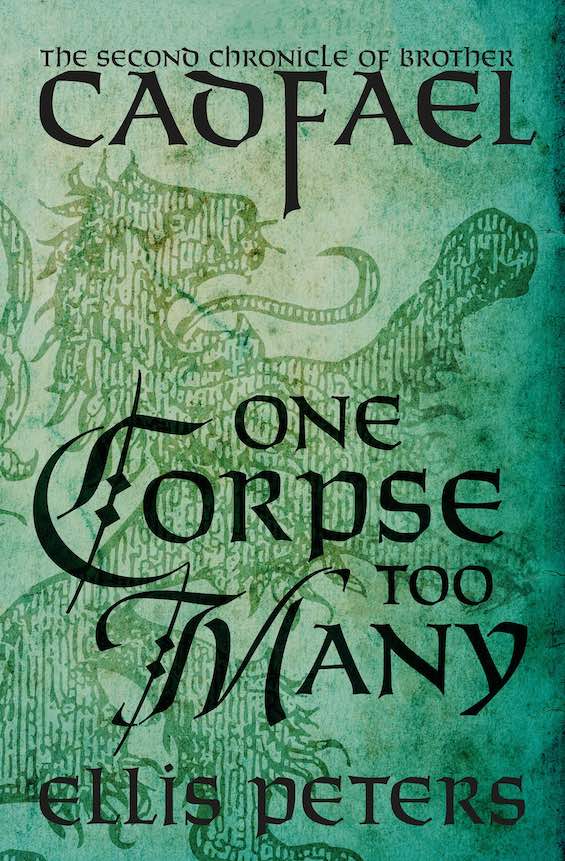
One Corpse Too Many – Brother Cadfael #2 (1979) 292 pages ★★★★☆—Brother Cadfael, the perfect detective for the Middle Ages
If there had been a detective in medieval times, he might well have looked a lot like the Benedictine monk of the venerable Chronicles of Brother Cadfael. A medieval detective could have depended only on his five senses, his experience of life, and his knowledge of the natural world. Brother Cadfael’s expertise as an herbalist is often crucial, but in other respects his success rests chiefly on his powers of observation and deduction. There was no fingerprinting or DNA evidence in the Middle Ages! In fact, the scientific method was unknown.
In One Corpse Too Many, the second book in the Chronicles, Brother Cadfael becomes embroiled in an investigation that places him squarely in the middle of a civil war. He supports neither side. Two young men who are in service to one of the combatants were spiriting away a hoard of gold and jewels that belonged to their liege lord, King Stephen. One turns up dead, the other very much alive and still in possession of the King’s “treasury.” To enliven the tale, two lovely young women become involved as well. Cadfael’s challenge is to discover the identity of the killer, help the murdered man’s companion to escape with the treasure, and ensure that the two women’s roles in the drama are undiscovered. It’s all rather complicated but a great story.
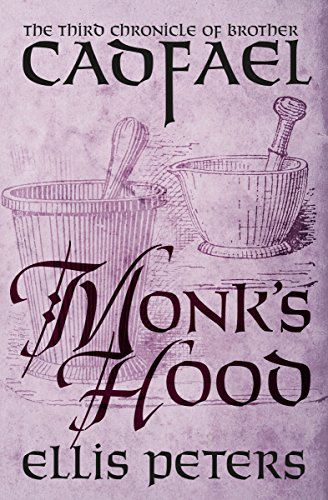
Monk’s Hood – Cadfael Chronicles #3 (1980) 286 pages ★★★★☆—Has human nature changed since Brother Cadfael’s time?
There are those who insist that human nature doesn’t change, but I’m not so sure. Whenever I’m tempted to believe that cliché, I cast my mind over the history I’ve read. As Stephen Pinker so famously asserts in The Better Angels of Our Nature: Why Violence Has Declined, the rate of death by murder or misadventure in the 20th century was the lowest in human history. Yes, despite two massive, blood-soaked world wars and all the violence since then.
In the Cadfael Chronicles, author Ellis Peters (Edith Pargeter) pays lip service to the superstitions that governed the lives of England’s 12th-century peasants. But she doesn’t extend the logic to the beliefs of Cadfael’s Benedictine brothers and the secular authorities he meets on a regular basis. And it’s difficult to believe that anyone, especially a monk like Cadfael who’d fought in the Crusades, would be so concerned about a single murder at a time when murder was simply an inescapable fact of life.
But I’ll admit it. I love reading these books. Peters’s grounding in history is fairly solid, her characters are engaging, and the murders Cadfael’s called on to solve are delightfully intriguing. In Monk’s Hood, the third entry in the Chronicles, Brother Cadfael’s extensive botanical knowledge is on brilliant display. Peters may present a distorted picture of life as it was actually lived in Brother Cadfael’s time, but she does write an excellent murder mystery.
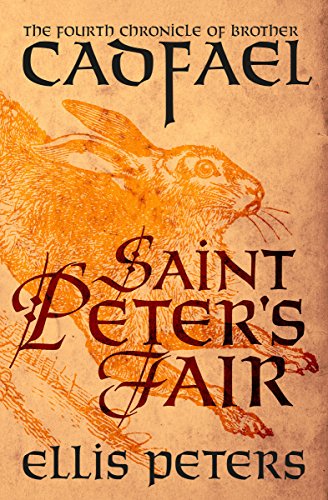
Saint Peter’s Fair – Brother Cadfael #4 (1981) 272 pages ★★★★☆—The Cadfael Chronicles highlight the history of medieval England
Edith Pargeter published twenty-one books in the Cadfael Chronicles from 1977 to 1994. They’re all set in twelfth-century England, spanning the years 1137 to 1145. That was less than a century after the Battle of Hastings (1066), when the island suffered its final invasion of Celtic peoples from mainland Europe. And that history of successive invasions accounts for the seemingly curious diversity of names that crop up in the Brother Cadfael novels. The books’s setting in the county of Shropshire on the border of Wales in southwest England was a melting pot of different ethnicities—a medieval version of today’s fast-blending world. And that diversity leaps off the page in Saint Peter’s Fair, the fourth novel in the series.
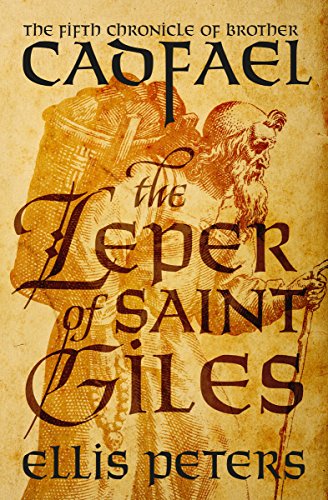
The Leper of St. Giles – Brother Cadfael #5 (1981) 224 pages ★★★★★—Brother Cadfael stars in a gripping medieval murder mystery
Imagine yourself projected back in time to the High Middle Ages in the west of England. The Benedictine Monastery of Saints Peter and Paul in the town of Shrewsbury, to be exact. It’s less than a century since the Norman Conquest, and the First Crusade had ended just forty years earlier. King Stephen reigns from London, but the Empress Maud has landed with one hundred forty men at arms at Bristol. The gentry are sharply divided between the two pretenders to the throne. And in this fevered atmosphere a wise Benedictine monk named Cadfael tends the herb gardens and ministers to the sick.
A former soldier and sailor in the Holy Land, Cadfael knows the ways of the world and is shrewd and perceptive to boot. When men or women turn up dead through misadventure nearby, as is often the case in these fraught times, it is he who is called on to investigate. And once again, in The Leper of St. Giles, Cadfael feels moved to pursue his private course to the truth, rejecting the hasty conclusions of the sheriff and the people of the town.

The Virgin in the Ice -Brother Cadfael #6 (1982) 285 pages ★★★★☆—Organized crime medieval style, in a complex Brother Cadfael mystery
The Virgin in the Ice reveals more about the way English society was organized in the Middle Ages than any of the five books that precede it in the twenty-one-volume series of Brother Cadfael mysteries. The novel’s predecessors all center on a murder or murders that the good monk is called upon to solve (and, of course, cleverly does so). Although a homicide does figure prominently in this story, it’s subordinate to the principal theme which highlights what has been called the Anarchy prevailing in England in the early twelfth century. In a sense, The Virgin in the Ice by Ellis Peters (1913-95) is a tale of organized crime medieval style.
In this unusually complex tale, Brother Cadfael travels to a fraternal monastery to tend to a brother wounded by an outlaw band. There he learns that the outlaws—a small army, really, involving dozens of men—have been raging through the countryside for plunder, rape, and murder. This is organized crime medieval style, in which a rogue knight has gathered about him a veritable army of desperate men.
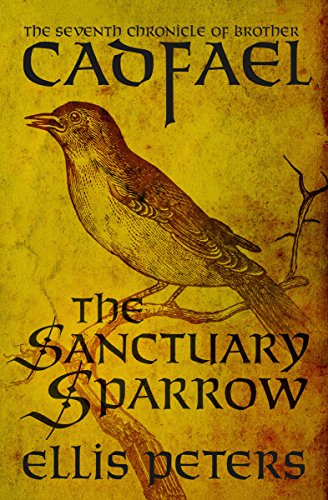
The Sanctuary Sparrow Cadfael #7 (1983) 289 pages ★★★★☆—A cozy mystery set in 12th-century England
In the previous entries in Ellis Peters’ Cadfael Chronicles, much of the focus lies on the contest between King Stephen(1096-1154) and his cousin Empress Maud (1102-67) over the English crown. The warring cousins crowd the background. But the seventh book, The Sanctuary Sparrow, resembles a cozy mystery confined to a small community and oblivious to outside influence. A young traveling minstrel is accused of murder and theft in the town of Shrewsbury, both capital offenses in 12th-century England.
The story is set in the year 1140. Brother Cadfael, the shrewd amateur detective who is the protagonist of the series, has his doubts from the first. Resisting pressure both from the town and his superior, Prior Robert, he doggedly pursues a series of small clues to uncover the truth. And that truth is no less than explosive when it finally emerges.
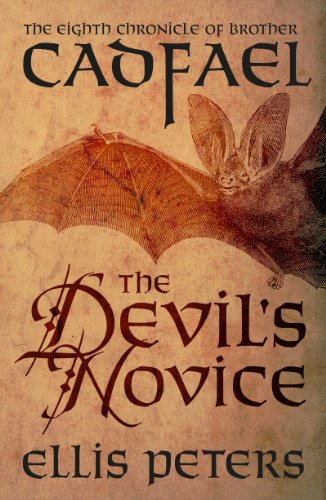
The Devil’s Novice – Brother Cadfael #8 (1983) 273 pages ★★★★☆—A medieval mystery opens a window on 12th century England
The Anarchy—Britain’s first (unacknowledged) civil war—was barely two years old in 1140 when The Devil’s Novice opens. Less than a century earlier, Duke William of Normandy—known to us as William the Conqueror but to many of his contemporaries as William the Bastard—had conquered the country at the Battle of Hastings. On his death, rule passed to one after another of his sons. His fourth, who ruled as Henry I, had died in 1135 without a male heir.
Henry named as his successor his daughter Maud (or Matilda), widow of the Holy Roman Emperor and known as Empress Maud. But a cousin, Stephen of Blois, claimed the throne. Beginning in 1138, the two claimants battled on and off for sixteen years until Stephen’s death in 1154. Ironically, the crown then passed to Maud’s son, who became King Henry II of England and Normandy, establishing the Plantagenet Dynasty. With his wife, Eleanor of Aquitaine, he also controlled half of present-day France.
The eponymous character in The Devil’s Novice is the younger son of a minor local lord. At age nineteen, Meriet Aspley arrives to join the Benedictine brotherhood at the Abbey of St. Peter and St. Paul in Shrewsbury, the principal town in Shropshire. Meriet soon proves to be a disruptive force. He frightens the young boys in the abbey’s school and interrupts the brothers’ sleep with loud cries and shouts at night. Most of the brothers want him severely punished for succumbing to the will of the Devil, but Cadfael rejects their superstition. He suspects something real and terrible has occasioned the young man’s nightmares.
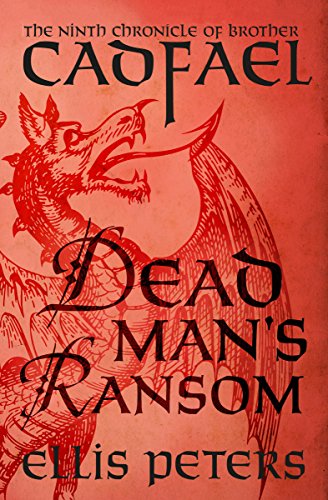
Dead Man’s Ransom – Brother Cadfael #9 (1984) 288 pages ★★★★☆—A baffling murder amid civil war in medieval England
Brutal, face-to-face warfare rages across the English countryside in 1141, as the ninth of the Cadfael Chronicles mysteries opens. But the life-or-death struggle over the throne between King Stephen and the Empress Maud has reached a climax. At Lincoln, in the northeast, Maud’s forces have captured the king. But for the people of Shrewsbury, near the border with Wales in the far southwest, there is even more troubling news. And Brother Cadfael of Shrewsbury Abbey finds himself embroiled in the fallout.
Two revealing time travel novels
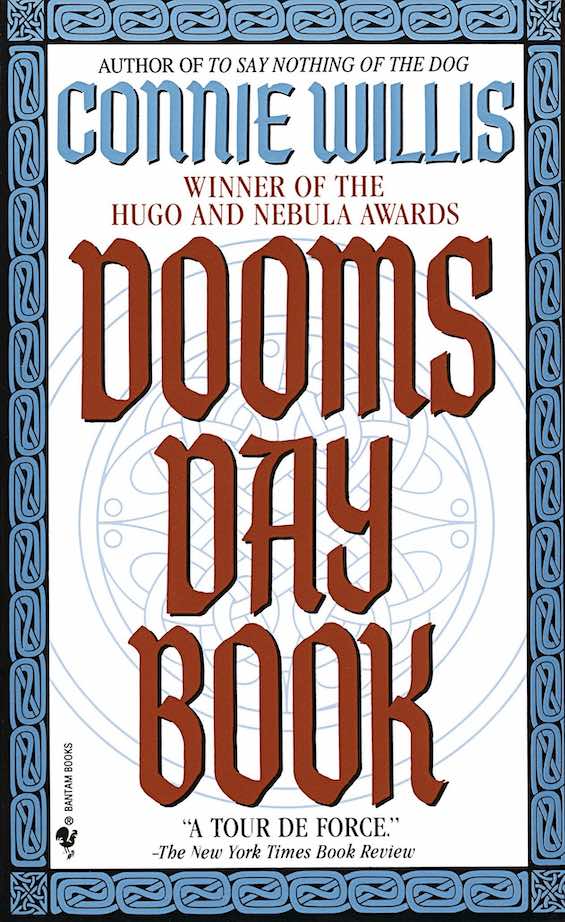
Doomsday Book – Oxford Time Travel #2 of 5 (1992) 592 pages ★★★★★ by Connie Willis—A time-travel novel about the Black Death
What do we know about the past, and how do we know it? Historians rely largely on the contemporaneous written records they call primary sources. But other disciplines make important contributions to history as well, including archaeology, physics, and genetics. Still, what they learn comes exclusively from what remains of the past. What if historians could learn first-hand by sending scholars into previous centuries to compare the historical record to the reality? Award-winning author Connie Willis explores that idea in her monumental 1992 science fiction tale, Doomsday Book, a novel about the Black Death.
Kivrin Engle is a bright and adventurous first-year student in medieval history at Oxford’s Brasenose College. In the mid-21st century, time travel is well established as a method for historians to study conditions over the past four or five hundred years, and Kivrin is eager to explore 14th-century England. Together with the acting head of medieval studies, Mr. Gilchrist, and her history tutor at Balliol College, Mr. Dunworthy, she develops a plan for a two-week visit in 1320, farther back than others have previously gone. Her target is the village of Skendgate, near the city of Bath in the country’s far southwest. Unfortunately for all concerned, everything goes wrong when Kivrin sets out for the past.
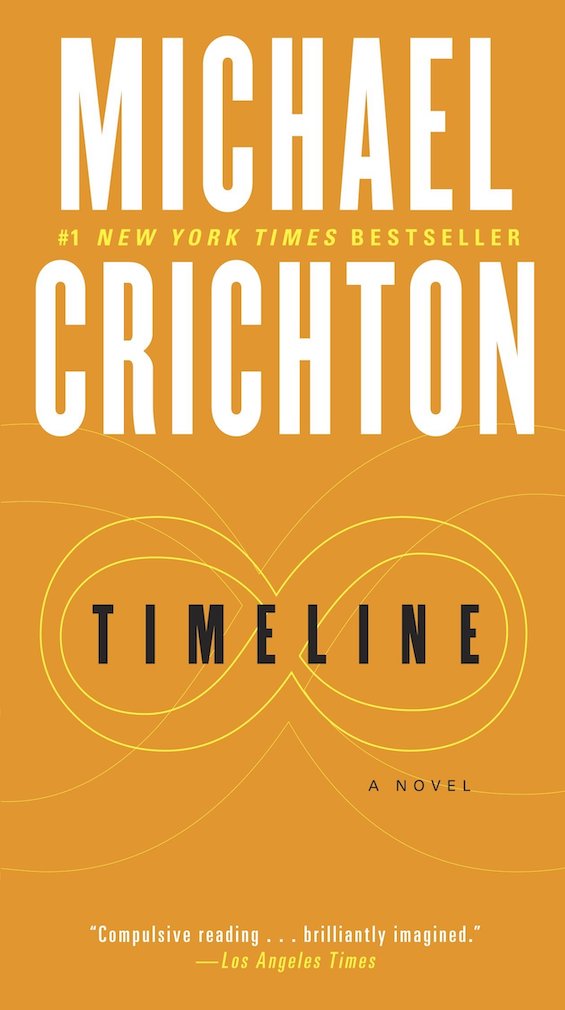
Timeline by Michael Crichton (1999) 458 pages ★★★★☆—Nonstop action in this time travel thriller
An irascible billionaire named Richard Doniger has built ITC, a high-tech company that has succeeded in constructing the world’s first working quantum computer. But he’s not using it to predict the weather more accurately or conduct genetic research at lightning speed. Instead, ITC has stumbled into what anyone else would call time travel. And the company is deploying it at the heart of new technology to investigate the history behind archaeological ruins around the world. Doniger is especially interested in two castles and a village in the Dordogne region of France. And it’s there that most of the action unfolds when he sends a team of history graduate students back to the year 1357 to rescue their professor.
For related reading
If you have a serious interest in the medieval era, or if military history fascinates you, you might check out War and Conflict in the Middle Agesby Stephen Morillo (A global view of war in the Middle Ages). It’s a good book, but I wouldn’t call it “readable.” Morillo is a serious, working historian, and the text he produced is dense and often a challenge.
Although properly speaking it’s not “reading,” I also recommend a course offered by The Great Courses. The Medieval World consists of a series of 36, one-half-hour lectures by Professor Dorsey Armstrong of Purdue University. She’s a specialist in medieval history and an engaging lecturer. I also heartily recommend another of the Great Courses, The Middle Ages Around the World, by Professor Emeritus Joyce A. Salisbury. It’s available on either DVD or Instant Video.
You might also enjoy:
- 20 most enlightening historical novels
- 20 top nonfiction books about history
- Top 10 historical mysteries and thrillers
And you can always find my most popular reviews, and the most recent ones, on the Home Page.

